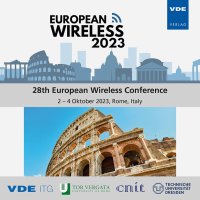Enabling Intelligent Vehicular Networks Through Distributed Learning in the Non-Terrestrial Networks 6G Vision
Konferenz: European Wireless 2023 - 28th European Wireless Conference
02.10.2023-04.10.2023 in Rome, Italy
Tagungsband: European Wireless 2023
Seiten: 6Sprache: EnglischTyp: PDF
Autoren:
Naseh, David; Shinde, Swapnil Sadashiv; Tarchi, Daniele (Department of Electrical, Electronic and Information Engineering “Guglielmo Marconi”, Alma Mater Studiorum - Universita di Bologna, Italy)
Inhalt:
The forthcoming 6G-enabled Intelligent Transportation System (ITS) is set to redefine conventional transportation networks with advanced intelligent services and applications. These technologies, including edge computing, Machine Learning (ML), and network softwarization, pose stringent requirements for latency, energy efficiency, and user data security. Distributed Learning (DL), such as Federated Learning (FL), is essential to meet these demands by distributing the learning process at the network edge. However, traditional FL approaches often require substantial resources for satisfactory learning performance. In contrast, Transfer Learning (TL) and Split Learning (SL) have shown effectiveness in enhancing learning efficiency in resourceconstrained wireless scenarios like ITS. Non-terrestrial Networks (NTNs) have recently acquired a central place in the 6G vision, especially for boosting the coverage, capacity, and resilience of traditional terrestrial facilities. Air-based NTN layers, such as High Altitude Platforms (HAPs), can have added advantages in terms of reduced transmission distances and flexible deployments and thus can be exploited to enable intelligent solutions for latency-critical vehicular scenarios. With this motivation, in this work, we introduce the concept of Federated Split Transfer Learning (FSTL) in joint air-ground networks for resourceconstrained vehicular scenarios. Simulations carried out in vehicular scenarios validate the efficacy of FSTL on HAPs in NTN, demonstrating significant improvements in addressing the demands of ITS applications.


